How to Add Texture to Your Packaging Design
In the competitive world of packaging design, standing out from the crowd is essential. One of the most effective ways to make your packaging memorable is by incorporating texture. Textured packaging not only captures attention but also enhances the tactile experience, adding a layer of sensory appeal that boosts customer engagement. Whether you’re designing boxes for beauty products, CBD Oil Packaging, or gift items, adding texture can elevate your brand’s identity. In this article, we will explore how to add texture to your packaging design, the different types of textures you can use, and how texture can impact customer perception and brand recognition.
Why Texture Matters in Packaging
Texture plays a significant role in how consumers perceive a product and a brand. The tactile experience can evoke emotions, build brand loyalty, and even influence buying decisions. Let’s explore a few key reasons why texture matters in packaging design:
- Appealing to the Senses: Humans are naturally drawn to multi-sensory experiences. Packaging that feels interesting to the touch adds another dimension to a product’s presentation. A textured box can convey luxury, uniqueness, or eco-friendliness, making it more appealing to consumers.
- Creating a Memorable Experience: Packaging isn’t just about function; it’s about creating a lasting impression. Textured packaging can be the element that helps your product stand out on store shelves and creates a memorable unboxing experience. The tactile sensation of a box with embossed or soft-touch features can make a lasting impact on consumers.
- Strengthening Brand Identity: Packaging serves as an extension of your brand identity. If your brand is all about sustainability, a rough, recycled-textured box could represent your eco-friendly values. If you’re in the luxury market, a smooth, velvet-textured box can signal premium quality. Your packaging design’s texture should align with your brand’s core message.
- Building Emotional Connections: The feel of the packaging can evoke emotions. Whether it’s the soft feel of a premium gift box or the natural texture of a kraft paper box, texture has the ability to make consumers feel something, strengthening their connection to your product.
- Enhancing Durability and Functionality: Besides aesthetics, texture can also impact the functional aspect of packaging. Textured boxes are often more resistant to scratches, scuffs, and other damage during handling, thus improving the durability of your packaging.
Types of Textures in Packaging Design
Now that we understand why texture is important, let’s dive into the different types of textures you can incorporate into your packaging design. Each texture has its own effect on the look and feel of the packaging, so it’s essential to choose the right one for your brand.
- Embossing
Embossing involves raising specific areas of the packaging to create a three-dimensional effect. This technique adds elegance and sophistication to your design, making it feel premium and tangible. Embossing works well for logos, patterns, or even brand names, giving them a tactile depth. - Debossing
Debossing is the opposite of embossing. Instead of raising the surface, debossing creates impressions by pressing the design into the material. This technique is ideal for subtle textures and can work wonders for designs that aim for minimalism or an understated aesthetic. - Textured Paper Stocks
Choosing a textured paper stock is one of the simplest ways to add texture to your packaging. There are various types of textured paper available, including linen, felt, and kraft. These papers have distinct feels and can be used for both structural and visual impact. For example, kraft paper is often used for eco-friendly products, while linen paper can evoke a sense of luxury. - Soft-Touch Coatings
A soft-touch coating gives your packaging a velvety, smooth feel, which enhances the premium nature of the product inside. This coating can be applied to a wide range of materials, from paperboard to corrugated cardboard, and works beautifully for luxury brands or products such as CBD Oil Packaging, cosmetics, or tech gadgets. - Raised Ink or UV Coatings
Raised ink printing creates a tactile effect by building up ink to form raised text or designs. It works well for highlighting logos, product names, or other significant parts of your packaging design. Raised UV coatings, on the other hand, give a glossy, textured look that catches light, making your design stand out with a high-end finish. - Foil Stamping
Foil stamping involves applying metallic foil onto packaging through heat and pressure. The shiny, metallic finish adds a touch of luxury and class, and when combined with embossing or debossing, it creates an opulent texture. Gold, silver, and holographic foils are commonly used in this technique, adding sparkle and sophistication. - Abrasive Textures
Abrasive textures, like sandpaper, give a rougher, tactile feel. This can be used to convey strength, durability, or an industrial aesthetic. If you’re packaging a product with rugged qualities or a product that has a natural, raw edge (like natural CBD Oil Packaging), abrasive textures can help convey those characteristics visually and physically. - Woven or Fabric Textures
Incorporating fabric elements such as woven textures or fabric labels into your packaging adds a sense of uniqueness and luxury. These textures can be used on boxes, bags, and other packaging types. Fabric packaging can convey warmth, sophistication, and elegance, which can elevate your product’s perception. - Perforations
Perforated packaging involves creating small holes or designs on the material, allowing for partial visibility and adding an interesting visual texture. This is especially effective for products that need a bit of “reveal” without fully opening the packaging, creating intrigue for the consumer. - Transparent or Frosted Textures
Incorporating transparency in your design, such as using clear plastic or frosted materials, offers a sleek and modern texture. Transparency allows customers to view the product inside, adding an element of trust. Frosted textures, on the other hand, add a soft, misted appearance that can give your packaging a refined, luxurious feel.
How to Choose the Right Texture for Your Packaging
When choosing a texture for your packaging design, it’s essential to align it with your brand values, product type, and the message you want to convey to consumers. Here are a few considerations to help you select the right texture:
- Brand Personality: Consider what message you want your packaging to send. Is your brand modern and sleek, or is it rustic and natural? A soft-touch finish could be ideal for a luxury brand, while a rough, organic texture would work for a brand that promotes eco-friendly values.
- Product Type: The type of product you are packaging will also influence your choice of texture. For example, CBD Oil Packaging may benefit from earthy, natural textures like kraft paper or linen, while high-end skincare products might call for smooth, velvety finishes like soft-touch coatings.
- Target Audience: Who are you designing for? A younger, trendier audience may appreciate bold, tactile designs, while older consumers may prefer something more traditional and understated. Understanding your target demographic is key to selecting the right textures.
- Packaging Functionality: Don’t forget that texture must also complement the packaging’s functionality. Textures should not only be aesthetically pleasing but should also contribute to the strength, usability, and protection of the product. Consider how the texture will hold up in shipping and handling.
- Budget: Some textured techniques, such as foil stamping or embossing, can be more expensive than others. Make sure to choose textures that fit within your production budget while still achieving the desired visual impact.
- Eco-Friendly Considerations: If sustainability is an essential part of your brand, consider using eco-friendly materials like recycled kraft paper or water-based coatings. Many texturing techniques, such as embossing or debossing, can be done on eco-friendly materials, making it easy to maintain a green footprint.
The Benefits of Textured Packaging Design
Adding texture to your packaging can offer a variety of benefits to your business. Here are just a few:
- Improved Brand Recognition: Textured packaging makes your product stand out on the shelf, making it more recognizable to consumers. It helps build a visual and tactile identity that your audience will associate with your brand.
- Increased Perceived Value: Textured packaging is often associated with premium products. Whether it’s a soft-touch finish, an embossed logo, or foil stamping, textured packaging can make your product appear more expensive and high-end.
- Enhanced Consumer Experience: As mentioned earlier, texture adds to the tactile experience of the product. This can enhance the overall consumer experience, increasing the likelihood that they’ll remember your product and recommend it to others.
- Differentiation from Competitors: In a crowded marketplace, standing out is crucial. Textured packaging provides a distinctive look and feel that can set your brand apart from competitors. It’s an effective way to ensure that your product catches the consumer’s eye.
- Sustainability and Innovation: Texture doesn’t always mean luxury. With advancements in sustainable packaging solutions, it’s now possible to create eco-friendly textured packaging options that appeal to consumers who prioritize sustainability in their purchasing decisions.
FAQs About Adding Texture to Your Packaging Design
Q1: What types of textures are best for CBD Oil Packaging?
For CBD Oil Packaging, earthy textures like kraft paper or linen finishes are ideal, as they evoke natural, organic qualities. Soft-touch coatings can also work well for a more refined, luxurious feel.
Q2: How can I add texture to my packaging without increasing costs significantly?
Some cost-effective options include using textured paper stocks, embossing, or debossing. These techniques can be done with minimal additional costs compared to more complex options like foil stamping.
Q3: Can I incorporate multiple textures in one packaging design?
Yes, combining different textures can create a dynamic, eye-catching design. For example, you could combine a smooth, soft-touch coating with an embossed logo to add depth and interest.
Q4: How do I choose the right texture for my product packaging?
Consider your brand’s identity, the product type, target audience, and functionality when selecting textures. Each texture communicates a specific message, so pick one that aligns with the values and aesthetics of your brand.
Q5: Is textured packaging more sustainable than smooth packaging?
Not necessarily, but many sustainable materials can be textured, such as recycled paper or biodegradable plastics. It’s possible to create eco-friendly textured packaging without sacrificing sustainability.
Adding texture to your packaging design is a simple yet powerful way to enhance the appeal and functionality of your product. Whether you are in the luxury market, selling natural goods, or offering products like CBD Oil Packaging, the right texture can help convey your brand’s values, increase perceived value, and create a lasting connection with consumers.
At TheBoxCrafting, we specialize in providing custom packaging solutions that are tailored to your brand’s unique needs. Visit TheBoxCrafting to explore our wide range of customizable packaging options, including textures, finishes, and eco-friendly materials, all designed to enhance your product’s presentation.


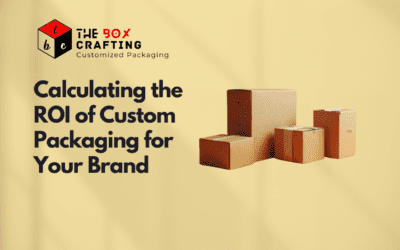
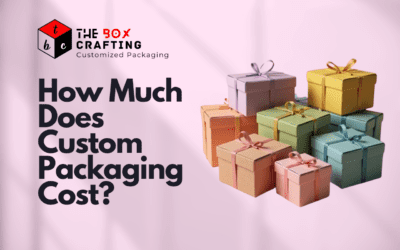

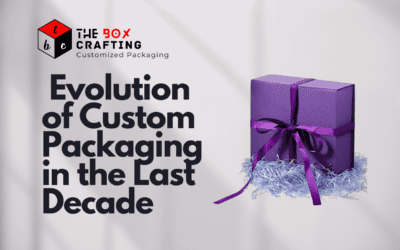
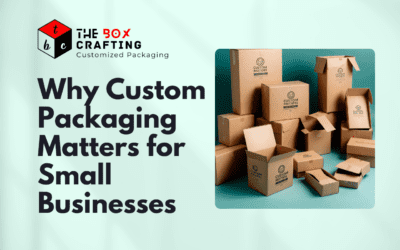
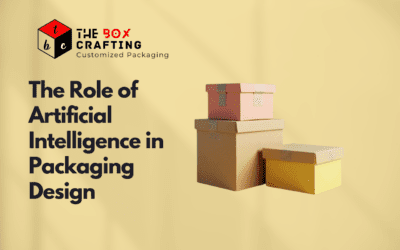


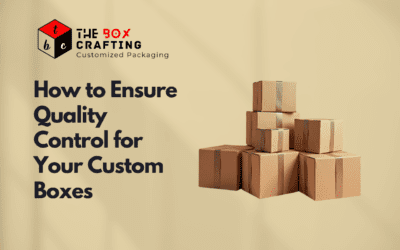

Leave a Reply